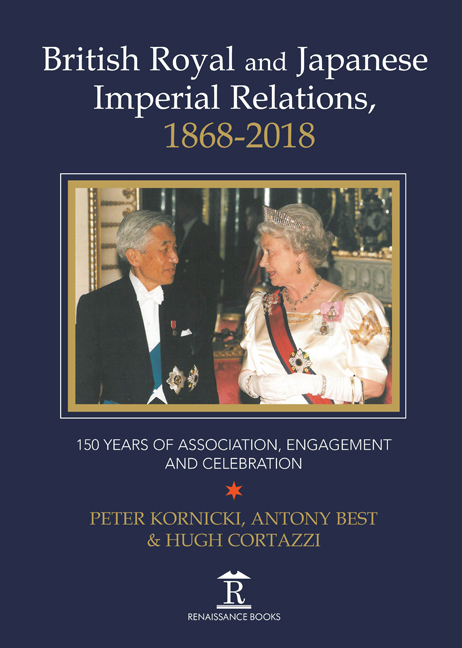 British Royal and Japanese Imperial Relations, 1868-2018
British Royal and Japanese Imperial Relations, 1868-2018 First Encounters: From 1868 to 1902
Published online by Cambridge University Press: 30 April 2022
Summary
INTRODUCTION
The FIRST EUROPEANS to set foot in Japan were Portuguese traders and missionanes in the middle of the sixteenth century, but more than seventy years were to pass before Bntain first came into contact with Japan. In 1613 the East India Company of London opened a trading post in Hirado, which was then a small port in the north-western part of Kyushu, but for vanous reasons it did not prosper and it was closed down in 1623. From that time until 1854, when the Anglo-Japanese Friendship Treaty was signed, contacts between Britain and Japan were negligible and Bntish officials for the most part considered Japan to be unimportant. It was, therefore, only after 1854 that Bntain and Japan began to enjoy formal diplomatic relations. In 1868 the sovereigns of the two countries came into direct communication with each other for the first time and this was followed just one year later by the first meeting between members of the British royal and Japanese impenal families. What had happened since 1850 to make these startling developments possible in such a short space of time?
The Tokugawa shoguns had mied Japan for more than 250 years when, early in 1868, the last of the shoguns, Tokugawa Yoshmobu (Keiki), informed the imperial court in Kyoto that he was surrendering his powers to the emperor. In this undramatic way, the Bakufu, the government of the Tokugawa shoguns, came to a sudden end. It was not violently overthrown; rather, it had been brought to its knees by a combination of domestic cases and pressure from foreign powers. In 1853, the American Commodore Perry and the Russian Admiral Putyatin had both travelled to Japan to seek access to Japanese ports, and they were followed in 1854 by Admiral James Stirling of Bntain. These visits resulted in the conclusion of the Anglo-Japanese Fnendship Treaty and similar treaties with the USA and Russia, but these treaties did not permit trade. The treaties did, however, permit foreign diplomatic representatives to reside in Japan and they continued to put pressure upon Japan to allow a trading relationship to develop.
- Type
- Chapter
- Information
- British Royal and Japanese Imperial Relations, 1868-2018150 Years of Association, Engagement and Celebration, pp. 3 - 72Publisher: Amsterdam University PressPrint publication year: 2019
